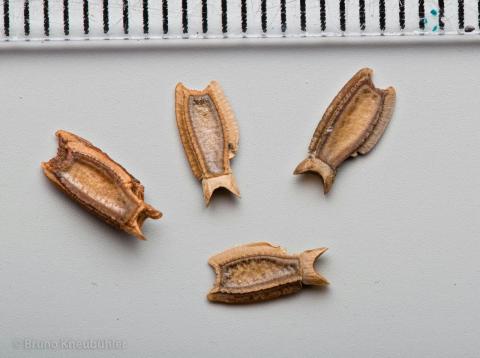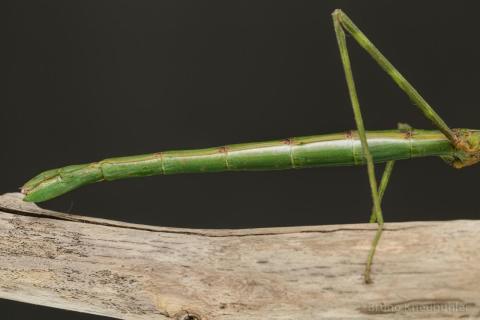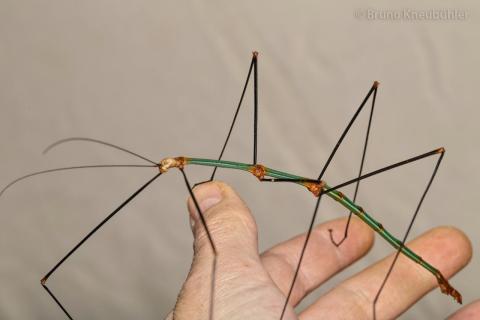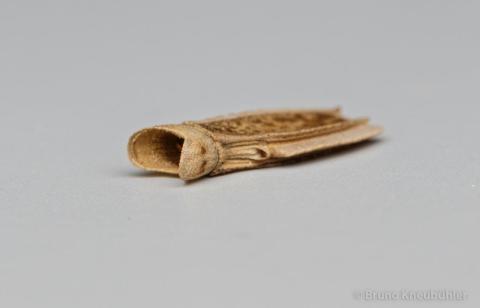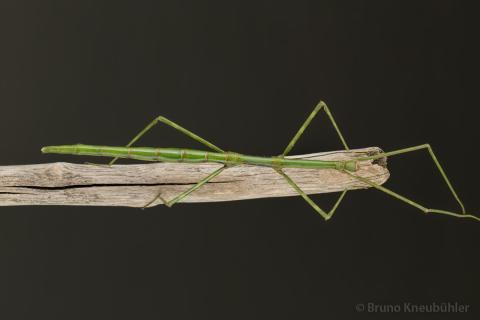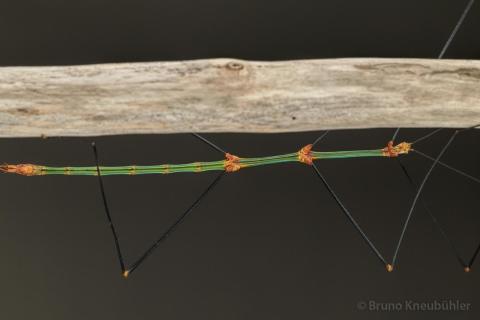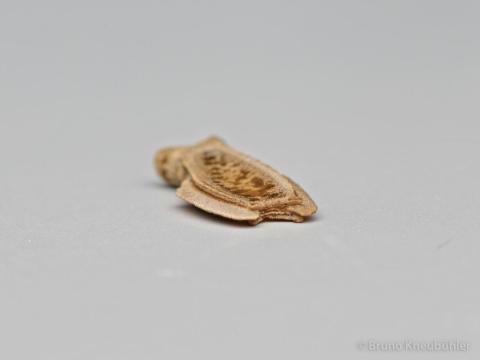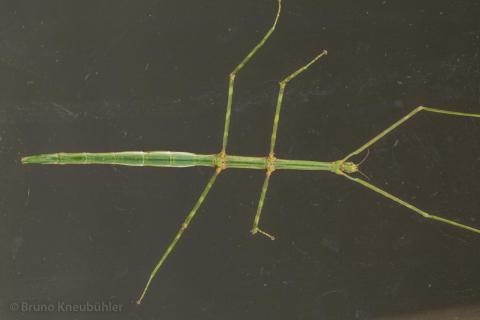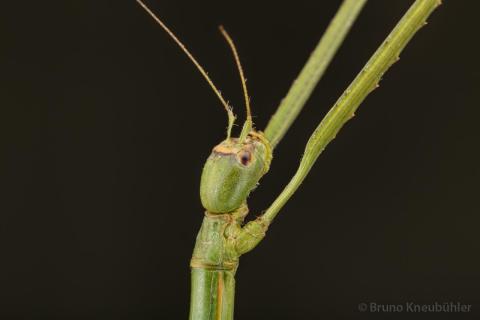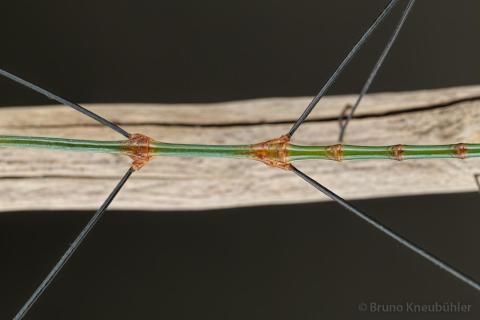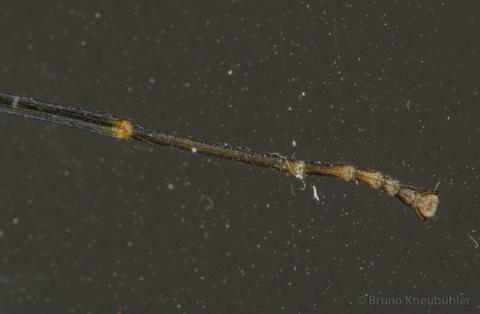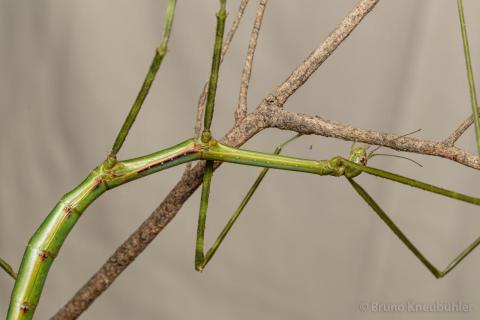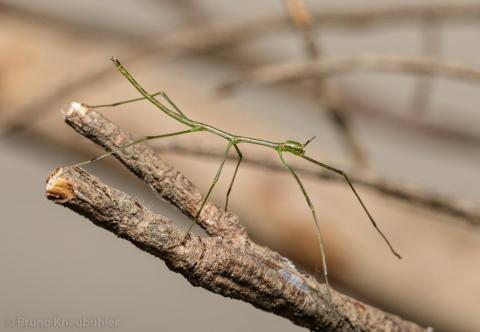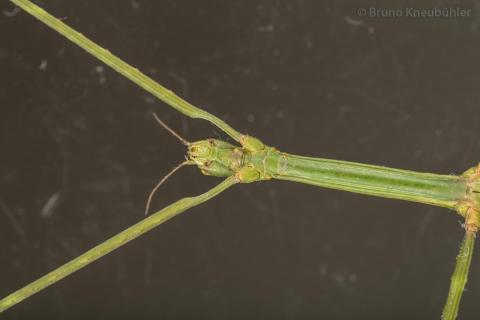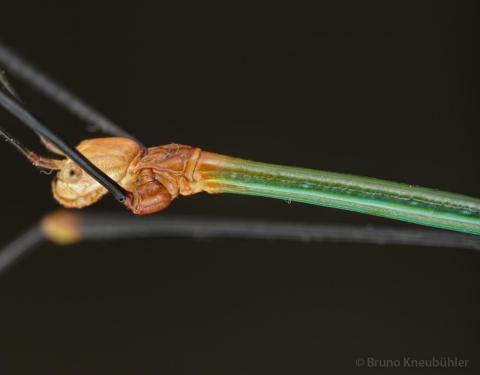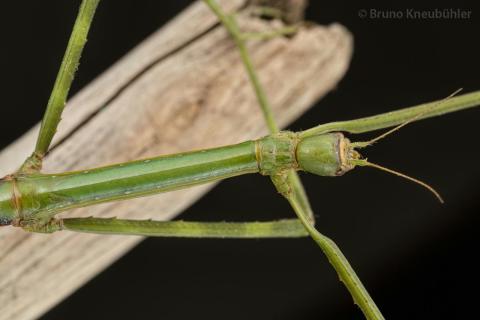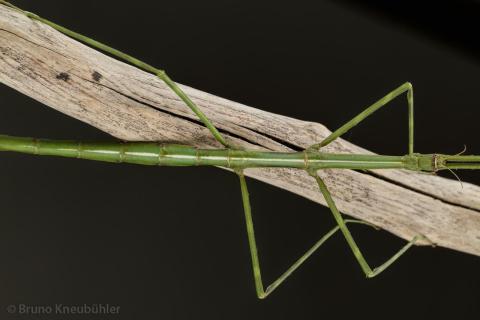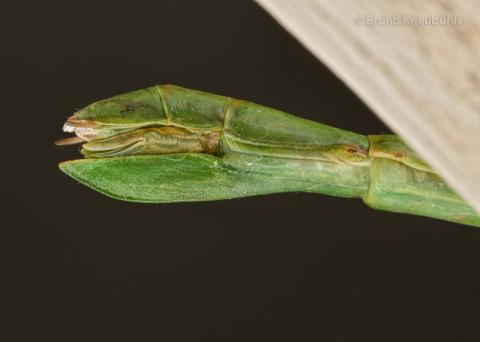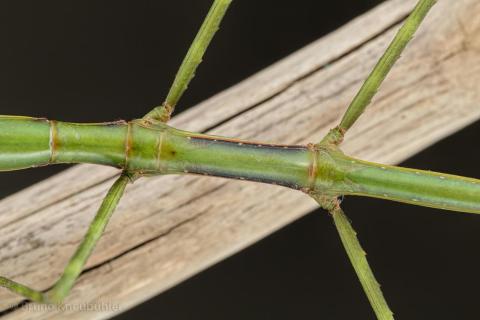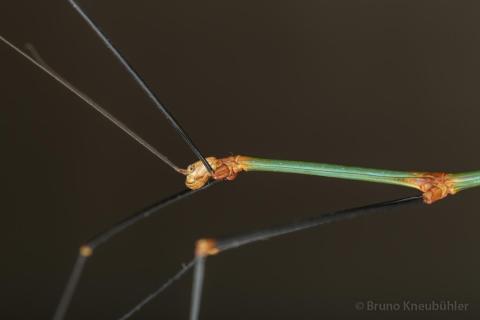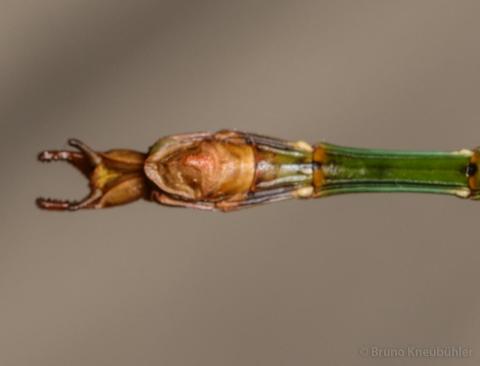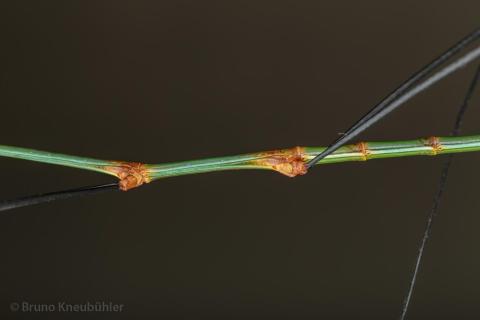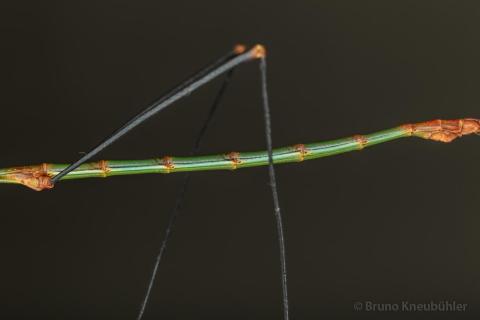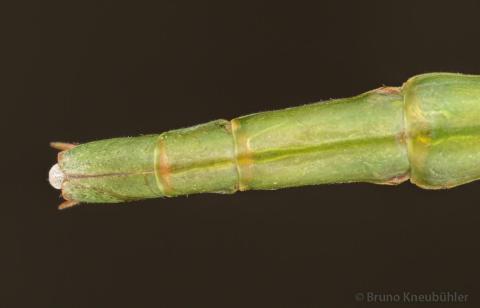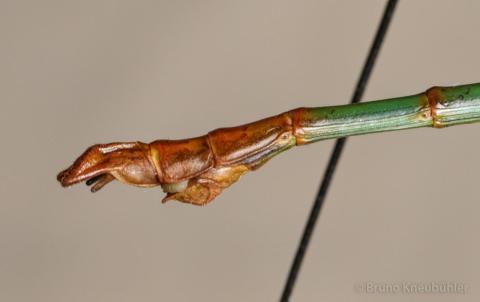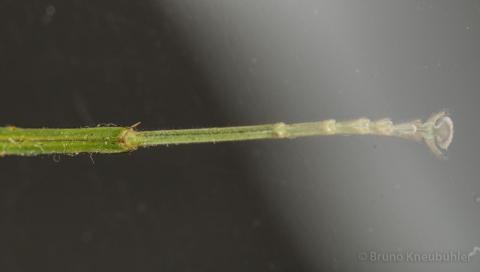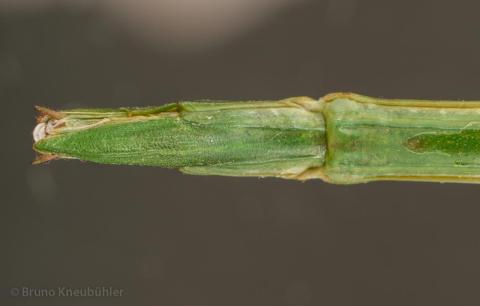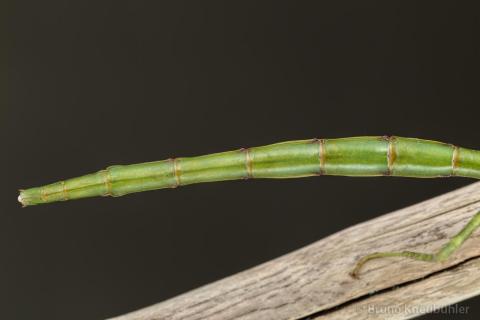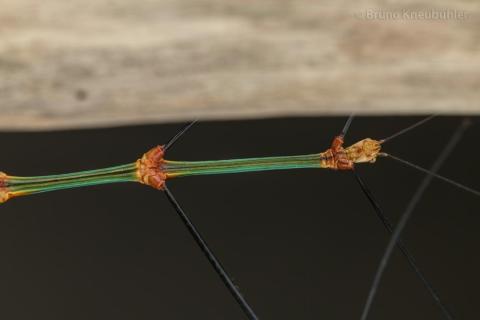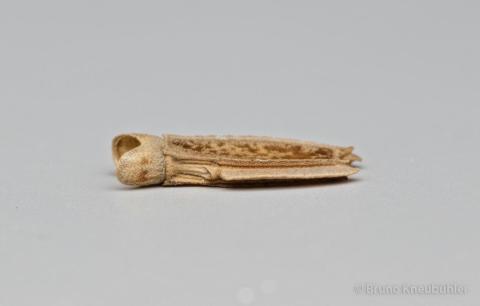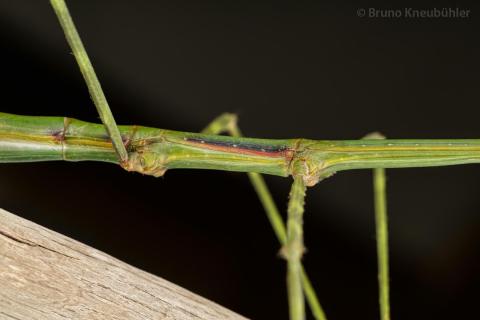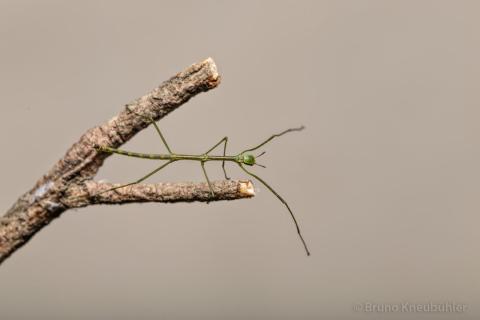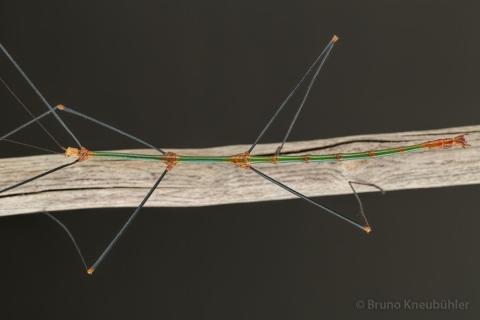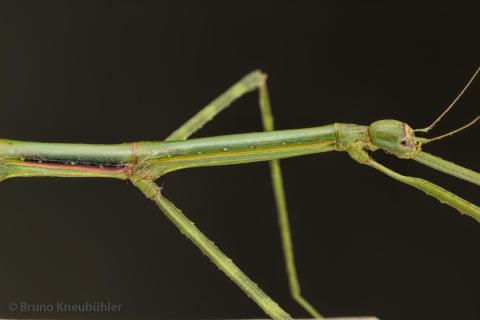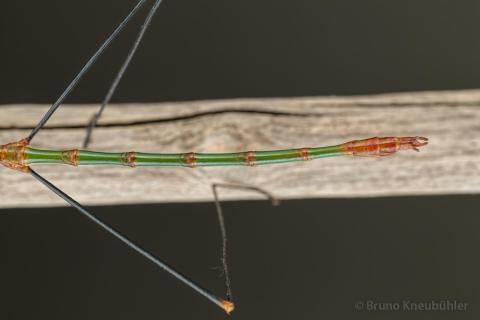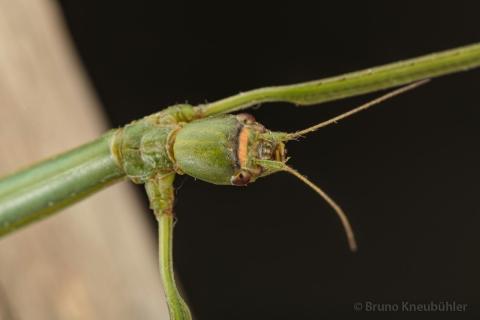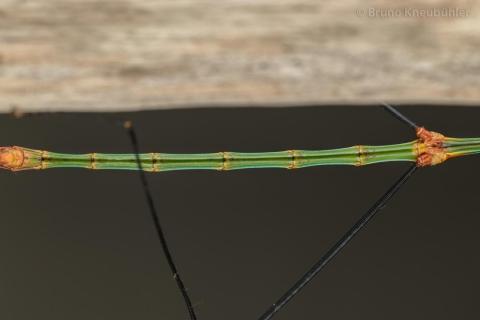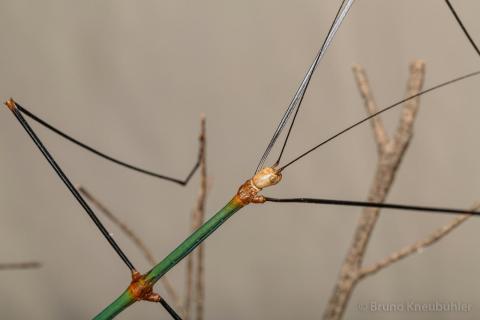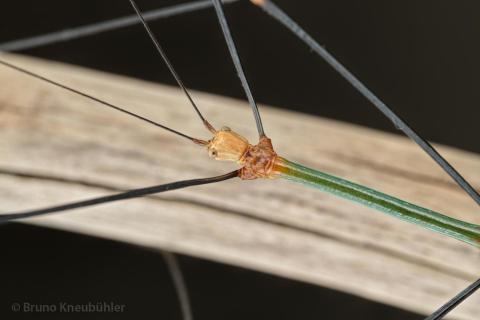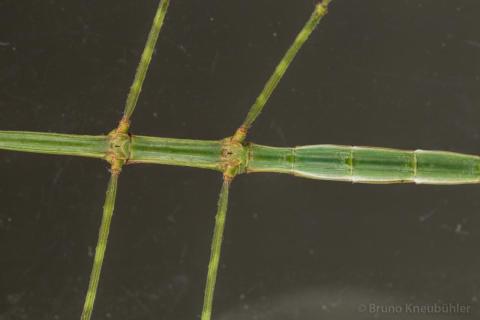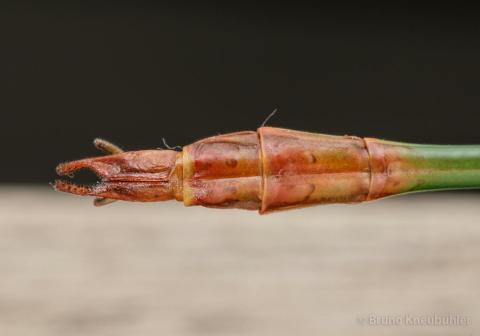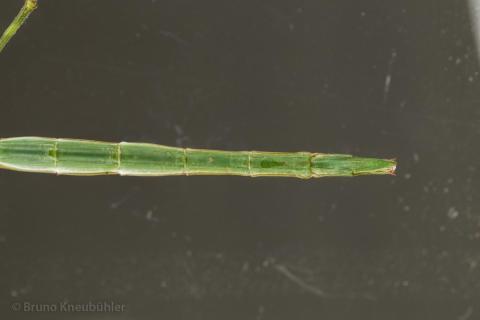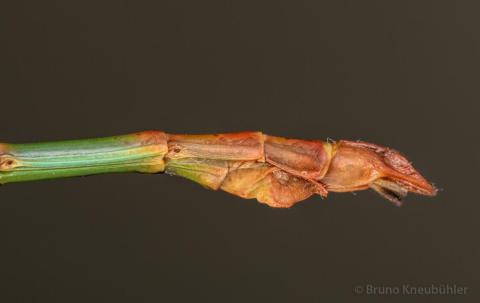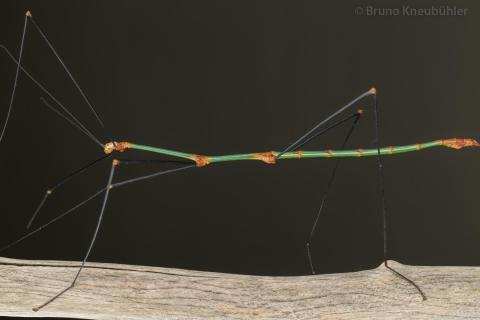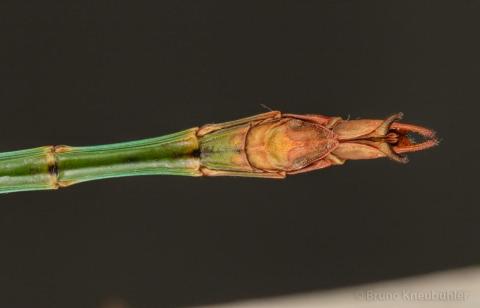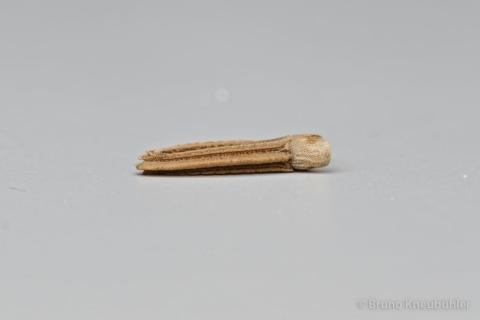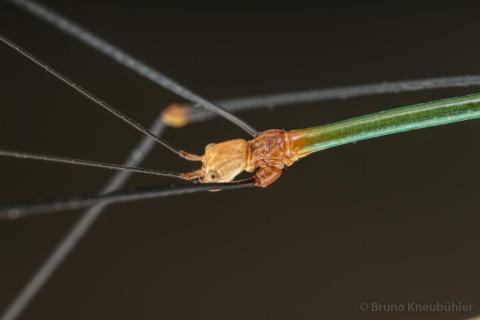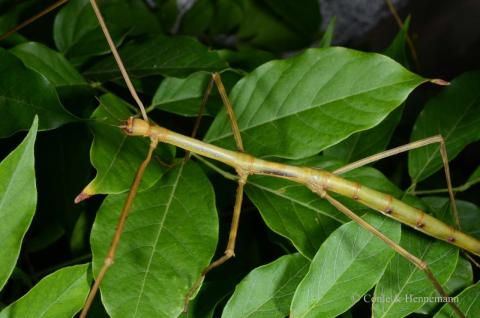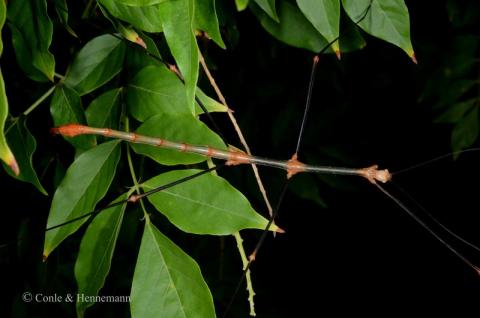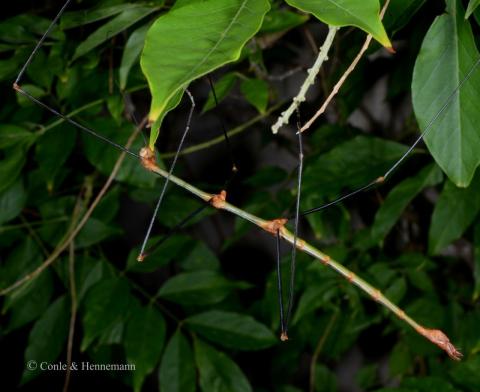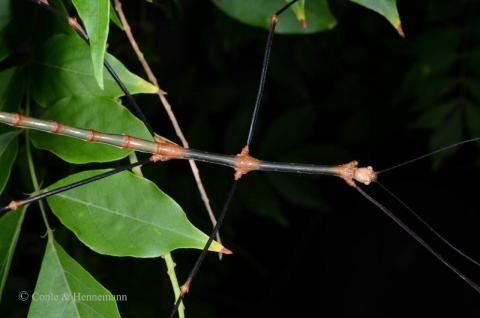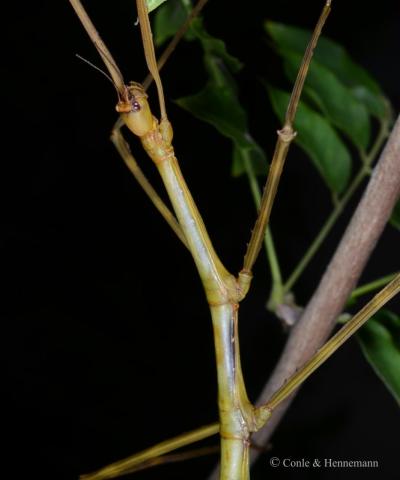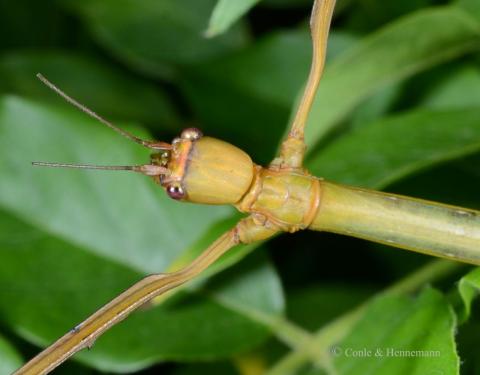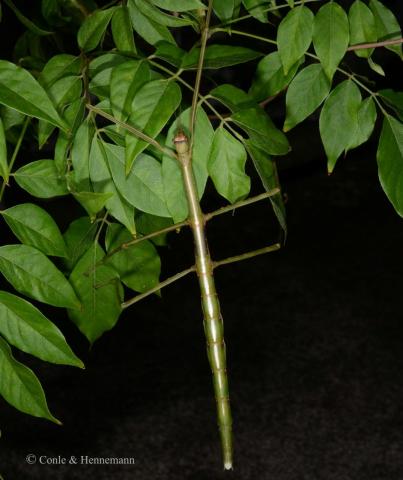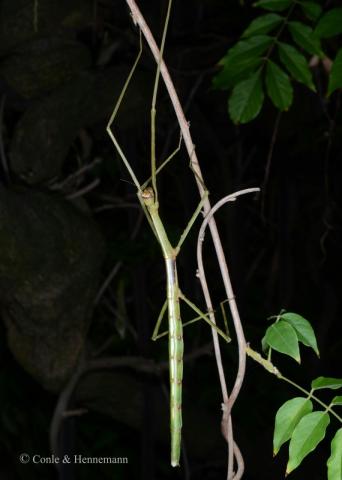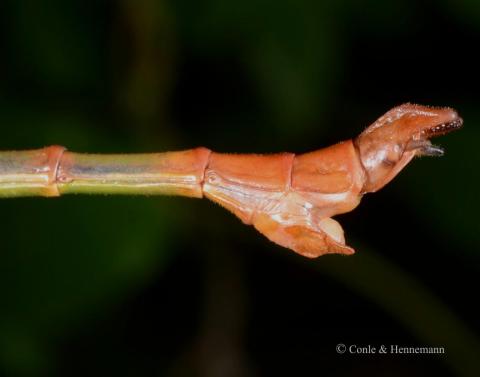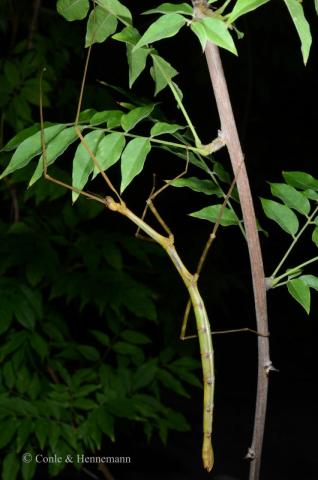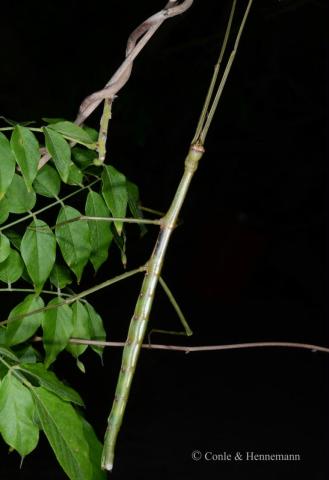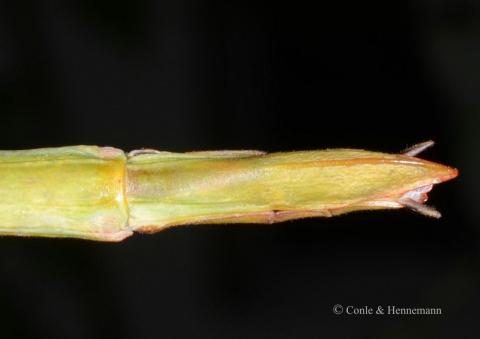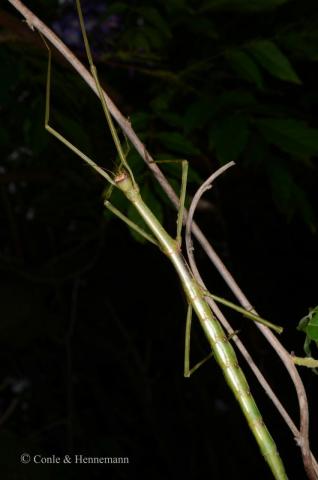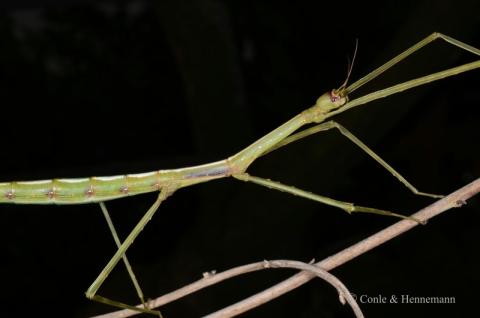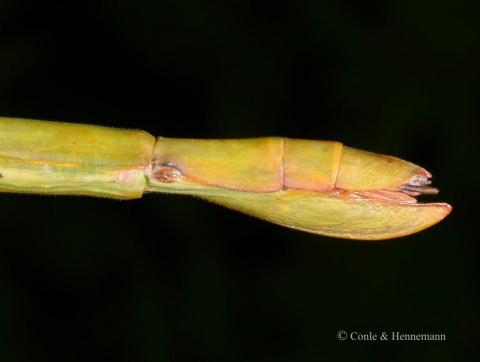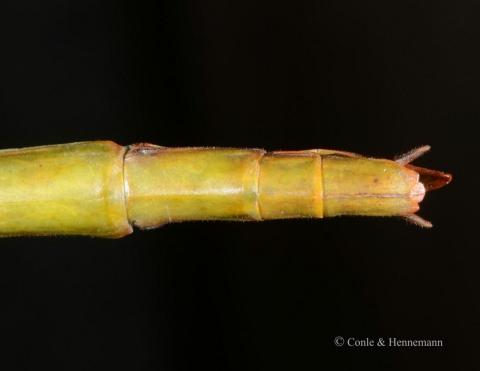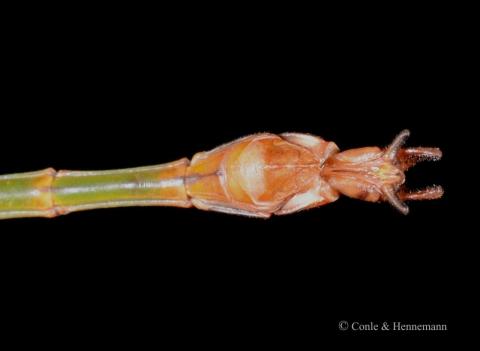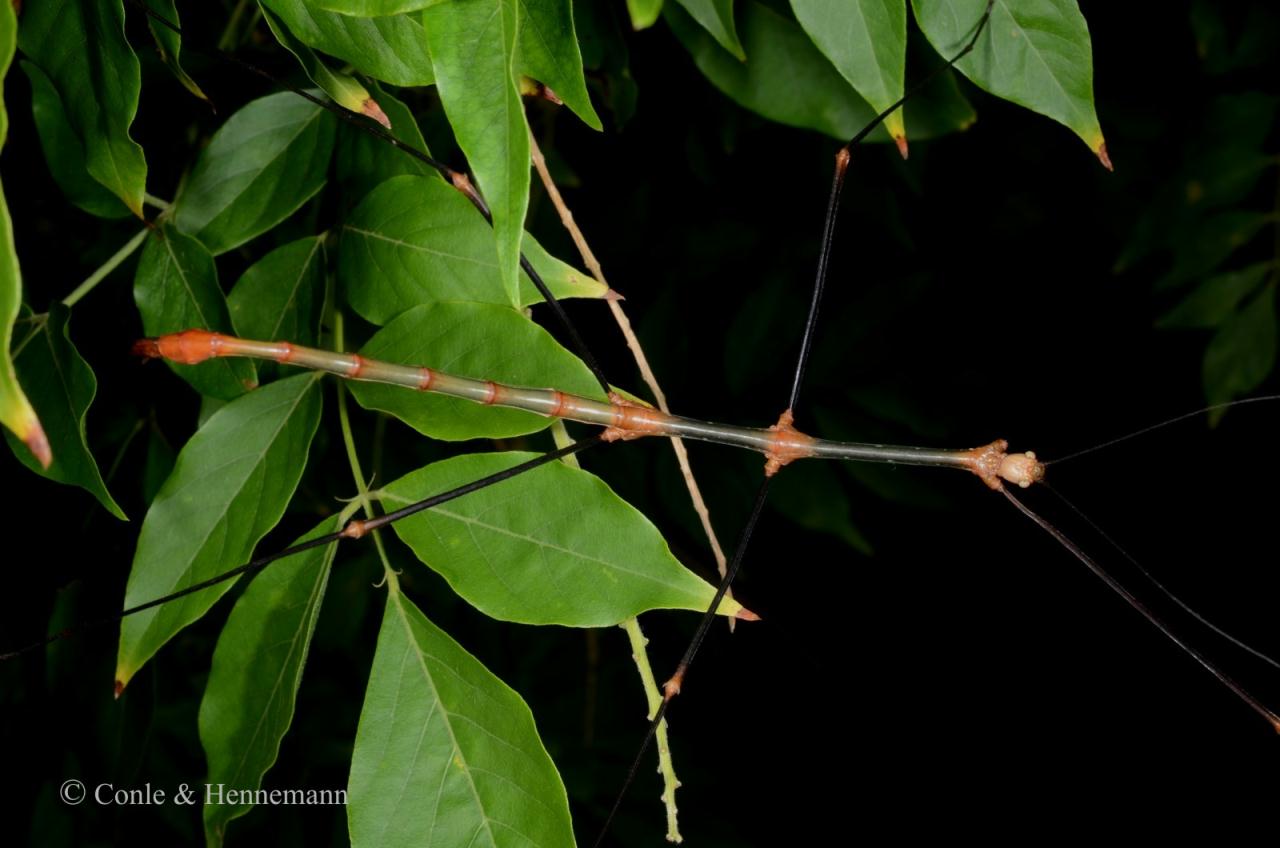
Genus
Species
Stock
CLP
634
Culture status
In culture
Foodplants
Bramble (Rubus spp.)
Breeding notes
(by Bruno Kneubühler)
General Notes
- this species is being examined taxonomically by Joachim Bresseel (Belgium)
- Etymology
- Ramulus from the latin rāmulus = small branch, twig
- für weiterführende taxonomische Infos → Phasmida Species Files
_________________
Culture History
- 2014 - first successful culture by Bruno Kneubuehler
- 2014 – distributed to other breeders as Ramulus sp. „Tay Yen Tu“
_________________
Origin
- Tay Yen Tu NP in Vietnam
_________________
Females
- inconspicuous, rather big phasmids
- body length about 16 – 18 cm
- coloration amongst females rather consistant
- body color mainly a strong glossy green
- orange-black markings on the head and the sides of the mesothorax
- few almost white dots on the sides of meso- and metathorax
- few females have a white stripe along the back
- antennae much shorter than the forelegs
- when females started to lay eggs, then a white stripe is visible on the side of the abdomen
- subgenital plate about the same length as the abdomen ending
_________________
Males
- very typical for the genus – thin with very long legs
- they look rather fragile
- body length about 12 – 13 cm
- coloration is consistent amongst males
- body color mostly blueish-green, with reddish-brown areas mainly at the segment borders
- few light dots on the sides of mesothorax and metathorax
- head light brown
- legs black with brown knees
- antennae short and black
_________________
Nymphs
- about 15 mm (L1)
- very short antennae
- green-brown
- dark stripe over the eyes
- by L3 it is quite easy to draw a distinction between ♀♂ (by the naked eye)
_________________
Eggs
- rather big and flat
- about 7 x 3 mm
- elongate
- irregularly shaped
- slightly glossy
- distinct, cup-shaped capitulum present on the operculum (lid)
_________________
Food Plants
- it is very much recommendede to cut away the edges of the leaves for nymphs in L1
- regularly change the plants and the water in which they stand
- bramble (Rubus spp.)
is very well accepted by nymphs and adults
_________________
Behaviour
- nymphs are mostly passive during the day and out and about feeding at night
- yet adults are often active and feeding during the day
- nymphs and adults react rather frantically when they feel threatened (like when they are touched). They drop down, wriggle about and freeze again after a few steps
- especially adults often let themselves drop even when just a shadow touches their cage
- this „dropping-behaviour“ is to escape a potential predator. But how to they do this, as they are rather big and their long legs make them rather unwieldy? They have simple yet very effective solution to this. They lay all their legs thighly forward (!), and then drop backward-downwards. Like this they fall like greased lightning trough the twigs in a tree – thus espcaping their enemy. This tactic is also applied by other big and long-legged species, but very nicely visible in this species
- matings usually during the night and short
- a defensive spray has not been observed
- females let the eggs just drop to the ground
_________________
Developement
- incubation time (HH-incubation on slightly damp sand at 20 - 23 °C) is about 5 – 6 months
- please note, that for phasmids it is not uncommon that some nymphs hatch a few or many months after the first nymphs hatched
- spread some moss over the eggs - this will make it much easier for the nymphs to hatch unscathed and it also reduces mould growth to some extend
- hatching ratio can be very high
- males will be adult after about 2.5 months (at 20 – 23°C), females after about 2.5 – 3 months
- females start laying eggs after about 2 – 3 weeks
- about 20 – 30 eggs per female and week
- adults can live for several months
_________________
Breeding Notes
- my general notes on how to breed phasmids are an integral part of this care sheet …
- it is recommend to keep this species in a seperate cage. The culture is much more likely to be successful than in an multi-species cage which are all too often badly crowed
- degree of difficulty = 2 (1= very easy / 5 = very difficult)
- as the freshly hatched nymphs are already quite big, therefore the incubation container must be big enough too
- keep nymphs seperate from the adults. This makes it much easier to monitor their developement and they are protected from being disturbed or even harmed by the much bigger adults (like during their moults)
- keep the nymphs in a cage with good ventilation, but take care that the humidity does not drop too low
- a constantly wet paper towel on the floor of the cage helps raising humidity
- a humidity level of about 60+ % rH (for adults) and 75+ % rH (for nymphs) seems to be fine
- small nymphs can be kept in a Faunabox (or similar cages like Faunarium)
- move nymphs to a bigger cage as they grow bigger
- a cage of at least 30 x 30 x 60 cm height should be provided for 3 – 4 adult couples
- at least two cages of 30 x 30 x 60 cm height are needed to breed this species successfully
- I have never sprayed nymphs, adults or their cage with water
- make sure that nymphs, which are about to undergo their adult moult, do not find places in the cage which would not offer them enough space beneath to moult successfully
